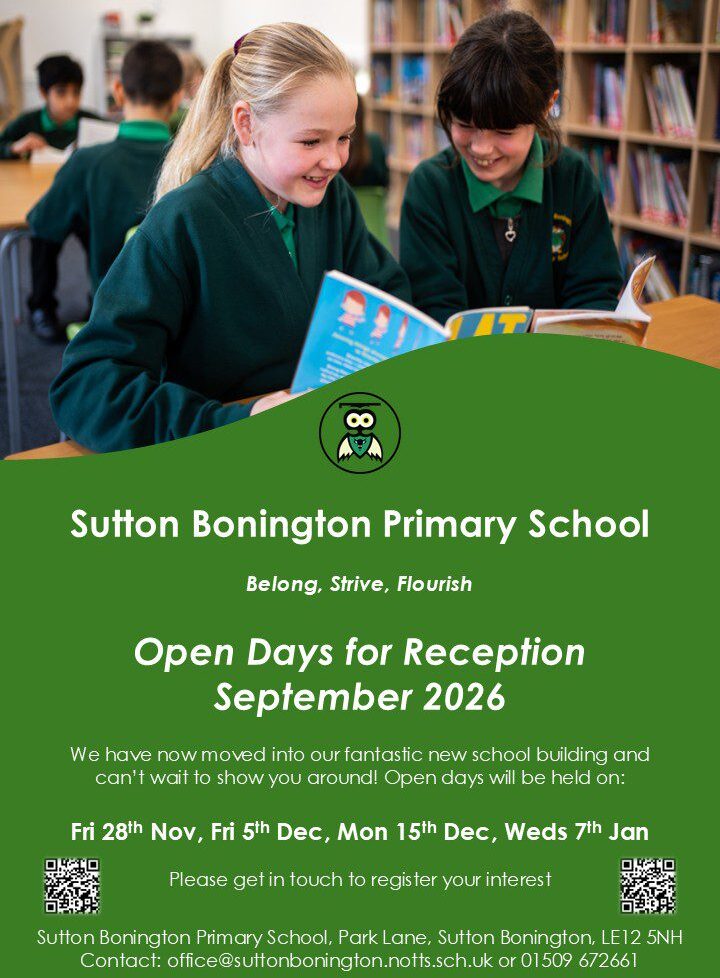Curriculum Intent
At Sutton Bonington Primary School, we teach pupils that art and design helps us to express ourselves creatively and understand different art forms as well as the history of art.
Our intention for art is to provide pupils with opportunities to develop their knowledge and understanding of great artists, craft makers and designers in order inspire their own creativity. Our art curriculum aims to develop pupils’ knowledge and understanding of a range of art methods, techniques, media, materials. Pupils will be exposed to a wide range of artists, genres and themes as well as their significance. Pupils will be taught technical language to enable them to discuss art and the value of it successfully. Our intention is to also provide opportunities for pupils to develop their procedural knowledge and their making skills. High quality lessons will enable pupils to experiment and explore the materials and techniques used by artists, craft makers and designers. Our intention is to provide frequent opportunities for pupils to develop decision-making and evaluation practices that artists have used throughout history. Pupils will explore how artists generate their ideas and learn how to transform and improve their own artworks.
Our curriculum intent is in line with that of the National Curriculum for Art and Design.
Curriculum Implementation
Children take part in three art units per year. These are taught within a half term in line with our coverage document.
The units of work are well sequenced to provide a coherent subject scheme that develops pupil’s knowledge and understanding, making skills, ability to generate ideas and experiment as well as creation and evaluative skills. Each unit is based around an art movement, genre, artist or theme and where appropriate may link to other areas of the curriculum. Within a unit, pupils are taught procedural knowledge and develop their skills in drawing, painting, 3D work, printing and pattern, collage, textiles and craft as well as digital techniques. The specific content of each unit is drawn from our knowledge and skills progression document to ensure appropriate pitch for the different year groups. Each unit also sets out key vocabulary that children are expected to be able to use. Units contain approximately 6 lessons.
Children’s written work and photographs are recorded in their sketchbooks. Each piece of work is dated and includes a learning objective in the form ‘to know…’ or ‘to know how…’
Within the Early Years Curriculum, children in Reception experience art and design curriculum through the ‘Creating with Materials’ early learning goal.
Adaptations for children with special educational needs and disabilities are made in line with our SEND Curriculum Adaptations document. These may include the use of additional scaffolding, explicit instruction, cognitive and metacognitive strategies, flexible groupings and use of specific resources or technology.
Where possible, opportunities for curriculum enrichment within Art and Design are exploited. For example, children may receive visits from craftspeople and artists or visit places such as the art galleries. They may also take part in art enrichment weeks and competitions.
Opportunities for children’s spiritual, moral, social and cultural development through art and design are also explored where appropriate. For example, pupil’s explore different artists’ interpretations of key figures or events and discuss what the artist was trying to convey which supports their own spiritual development. Pupils consider the morality of artists work such as graffiti artists and have opportunities to explore their own expression of big ideas about life e.g. morality and ethical issues. Their cultural awareness is developed by exploring a wide range of artists and creative media from around the world.
Impact
By the end of Key Stage 2, we aim for pupils to be knowledgeable and skilled in the different elements of our art curriculum which will enable them to appreciate visual, tactile and sensory experiences as well as allow them to understand and respond to the world. We focus on the progression of knowledge, skills and discrete vocabulary. Our art curriculum enables children of all abilities to be able to develop their knowledge and understanding of the work of artists, craftspeople and designers from a range of times and cultures and apply this knowledge to their own work. Our aim is that pupils will be able to communicate what they see, feel and think through their use of colour, texture, form, pattern as well as different materials and processes. When reflecting they will be able to discuss their thoughts, ideas, processes and evaluations of their own and others’ work.
We assess the impact of our curriculum through examining children’s work, talking with and questioning children as well as making observations and setting specific tasks. Teacher assessment is ongoing throughout the year with a formal summative assessment made and recorded at the end of the summer term.


